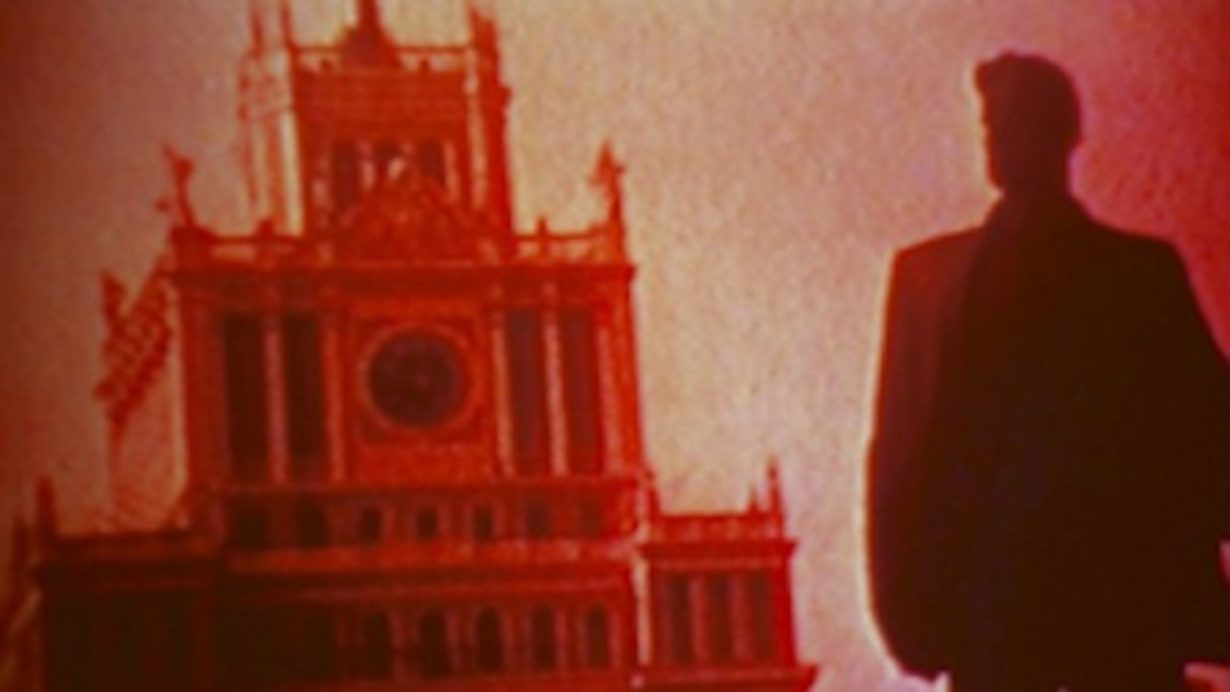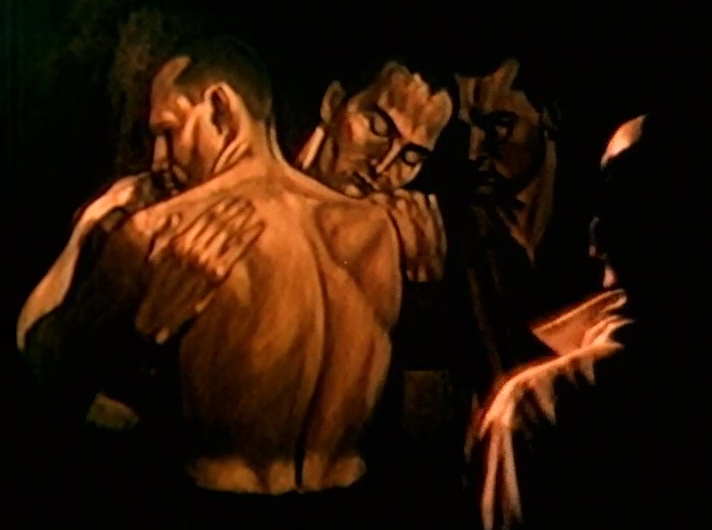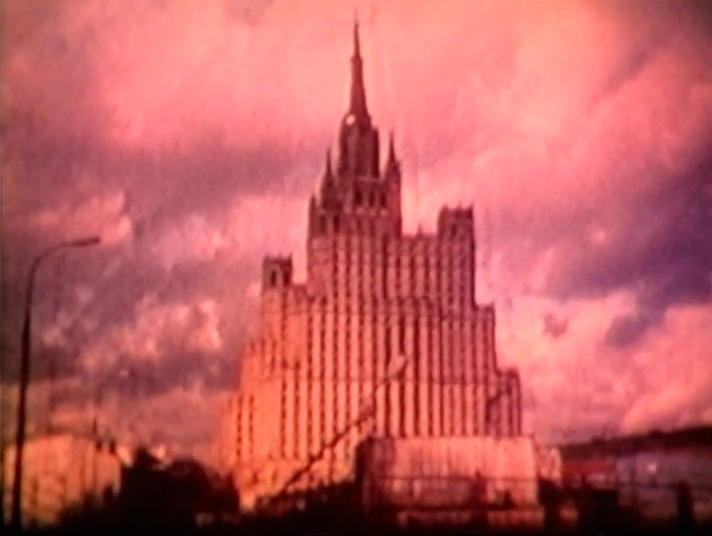The rarely-seen film, streaming this week, mutes the heroism of revolution through the queered lens

In October 1984 Derek Jarman was in Moscow. Alongside fellow filmmaker Sally Potter and theorist Peter Wollen, he was there on the invitation of the Soviet Union’s Union of Cinematographers, a trip contrived by the British Film Institute. The trio visited the Bolshoi and the State Circus, were taken to Sergei Eisenstein’s flat, preserved exactly as it was at his death in 1948; a drinks reception was thrown at the British ambassador’s house. Jarman screened his 1979 retelling of Shakespeare’s The Tempest and took part in various seminars and discussion programmes both in Moscow and, on a second stop, Baku in Azerbaijan. It was a typical episode of soft power from both sides as relations between the Cold War foes began to apparently thaw.
Jarman also took a lot of footage, which he pieced together, along with scenes shot back in London, to make Imagining October (1984), which is being streamed online this week (see below for details). Against a droning soundtrack by Genesis Breyer P-Orridge and David Ball, Moscow’s Seven Sisters and the Kremlin are seen in grainy Super-8 footage bathed in red light. Jarman is shown sitting on Eisenstein’s chair, Wollen holds up a book apparently censored by the Soviet authorities, sentences erased by ominous blocks of black ink.

As the half-hour film progresses, lightly homoerotic scenes of soldiers (one of whom is played by the artist Peter Doig) intercut. A soldier removes his jumper and is held in the arms of another as they stand in a live tableau: the thick wool of the other man’s top scratchy against his partner’s bare chest. An artist is painting their portrait; the soldiers are also shown eating – a dinner flanked by red flags and pictures of Lenin. Azerbaijani street scenes interlace. Like much of Jarman’s work there is a strangeness that defies description: an obliqueness for which the hackneyed descriptor ‘dreamlike’ is both apt and not quite right. For all the abstraction, coupled with the title, there is a narrative and logic unfolding here: a retelling of the 1917 revolution with the heroism muted through the queered lens.
In his 1999 biography of Jarman, Tony Peake says that the filmmaker had originally planned not to mention his sexuality, in a country where being gay was banned, during the course of the trip. But at one of the Russian seminars, an audience member described Jarman’s work as ‘camp’. ‘Perhaps you’re referring to my homosexuality,’ he answered. ‘Many artists are gay.’ An uncomfortable atmosphere descended over the event. Peake writes that politics entered Jarman’s work only through the prism of the personal: as a gay man his private life was deemed a matter of public debate, so it was natural perhaps that all public life should be filtered through this identity.

It is easy to deduce that though Imagining October was made in solidarity with gay people in the Soviet Union, they are neither the subject nor audience. Intertitles, a nod perhaps to Eisenstein’s silent-era October: Ten Days That Shook the World (1928), make various protestations that, on the surface, relate to Soviet suppression. ‘Riot Police in the Streets?’, ‘History Ransacked’, ‘Promoting Poverty of Intellect and Emotion’, ‘Books Seized by Customs?’. ‘Bookshops Closed Down?’ Six months earlier however, in London, the independent Gay’s The Word bookshop had been raided by UK Customs and Excise, seizing imported books which it deemed obscene, a wide charge that covered titles by Jean Genet, Gore Vidal, Djuna Barnes and Jean-Paul Sartre. It was not just the Soviet Union censoring books, Jarman points out here, but Thatcher’s government and its homophobia was no greater friend to gays than the regime on the other side of the Iron Curtain. A moral hysteria surrounding AIDs was sweeping Britain, the miner’s strike was in full swing (an action supported by gay activists, as it was brutally broken up by police): back home, society seemed on a knife edge.
Watched nearly four decades later, Imagining October has dated; conditions in both countries are vastly different (though should anyone need a primer on how it is to be gay in the lands of the former Soviet Union, then David France’s new documentary Welcome to Chechnya, 2020, makes for sobering viewing). It was a film produced to protest a particular moment. What remains however, and why it is still worth watching beside its odd formal elegance, is that it is a document of an artist attempting to navigate power relations. The soldiers are both domineering, and dominated by the artist (both Jarman and his proxy, the portrait painter), the political dogma of the Soviets and capital of the West both instrumental in the work’s production and abused in its subject. When art is increasingly called into service of one political agenda or another – be it illiberal or neoliberal – Jarman’s work still offers a valuable lesson. For him, art is entangled in a sadomasochistic relationship with the world that surrounds it: sometimes the master, sometimes the slave.
To watch Derek Jarman, Imagining October (1984), head to Amanda Wilkinson Gallery to sign up for the viewing details – the screening runs until 13 July 2020.